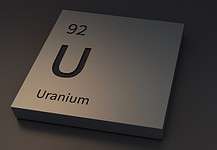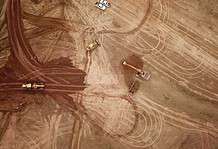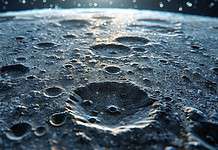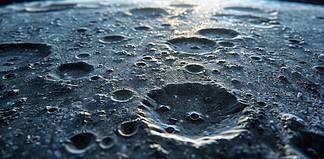HYDRAULIC cylinders are the powerhouses of modern mining operations.
They work tirelessly in the harshest environments for thousands of hours lifting enormous loads and coping with earth shattering impacts.
When all is well, these cylinders are seldom given a second thought on a busy mine site, but when they fail, they suddenly become the focus of attention as equipment goes out of operation and expensive downtime builds.
Repairing hydraulic cylinders is viable from both a time and a cost perspective, especially when there is the option to drop off a worn cylinder and pick up a repaired one straight off the shelf.
WesTrac’s parts exchange system works exactly this way and ensures that their customers are up and running as soon as possible and that they only pay for the wear or damage to their own cylinder – a win-win situation.
Caterpillar® is a global brand and its parts are in demand everywhere, which means that at times they can be hard to obtain.
The solution is to repair these components here in Australia in accordance with Caterpillar’s strict guidelines.
The Australian Mining Review visited WesTrac’s hydraulic cylinder workshop in South Guildford, WA, to follow the process of a typical cylinder undergoing all the testing, repairing and machining processes required to transform it back into a functioning component capable of achieving the expected life of a new OEM part. WesTrac also offers this service from their Tomago facility in NSW.
The following photos and captions outline this process.
1. This is how the suspension cylinder looked when it arrived at WesTrac. The customer supplies the old core and it is then stripped and put through a total rebuild process, that meets or surpasses Caterpillar’s reusability guidelines.
2. WesTrac built this cylinder disassembly bench in-house. After the old cylinder is cleaned and media blasted it can be bolted to the bench and disassembled.
All components and surfaces are inspected for potential causes of failure and signs of damage.
Measurements are taken to see if it is salvageable in the first instance and if it is, the technicians will identify exactly what repairs are necessary.
Each cylinder is accompanied by comprehensive documentation.
This ensures that the repair item is backed by Caterpillar and meets all criteria for their parts exchange program.
3. A view inside the used cylinder reveals the cross-hatched bore.
A visual inspection of this area is made to locate and locate scores or obvious signs of damage.
Measurements of the inside diameter are then made at various points to determine if the bore is within limits for re-honing and if it has become out of round from normal wear.
4. The first stage of the cylinder remanufacturing process involves the eyes.
Technicians in the ‘Boily Bay’ inspect the eye, which may run ball joints, straight pressed sleeves or bearings depending upon the application.
The eyes normally display signs of wear and also become oval in time.
The reclamation process begins with an internal bead of weld that covers the entire inside of the eye.
The ID welding bench was customised in-house at WesTrac and features a tip that rotates and raises automatically for even weld coverage.
5. After the rod eye has been welded to reclaim its inside diameter, the rod is fixed to the horizontal borer and machined back to Caterpillar’s spec size.
After this process, the rod eye is perfectly round and ready to accept a new sleeve, ball joint or bearing.
6. In some cases the cylinder core is beyond repair. It is possible to remove the best parts of the rod and barrel, manufacture and rebuild new serviceable components.
In this case a cylinder flange has been removed from an old cylinder and is being machined in readiness to be welded to a new cylinder using a submerged arc welding process.
In most cases this process is still cheaper and faster for the customer than acquiring a brand new OEM part.
7. A cylinder is mounted in WesTrac’s Sunnen horizontal hone.
The long bed can accept cylinders up to 6m in length and re-machine bores between 2-inch and 20-inch in diameter.
When in operation, oil is pumped over the honing stones as the head both rotates and reciprocates.
Each pass removes a small amount of material from inside the bore, removing any light scoring and providing the correct surface finish and cross-hatch to suit the cylinder’s final application.
The honing process continues until the inside diameter meets Caterpillar specifications.
8. After the rod eye has been welded and bored, the entire rod is sent to the HVOF shop. HVOF stands for High Velocity Oxygen Fuel – a process that applies molten powdered metal, at velocities approaching Mach 3, onto a metal substrate to reclaim worn metal surfaces.
The first part of this operation is to grind the existing hard chrome or HVOF coating off to reveal the steel parent metal underneath. This ensures a secure bond that will last for the entire operational life of the part.
The orange sparks in the photo indicate that the stone has worked its way down to the base material.
This Norton grinding machine was built in 1908 and is WesTrac’s oldest serving ‘employee’.
9. After several passes of the grinding wheel, an outside micrometer (calibrated quarterly for consistent measurements) is used to check the outside diameter of the rod.
It is critical that just the right amount of material is removed from the rod to allow the metal coating process to finally bring the diameter back to the Caterpillar OEM specification.
Remove too much material and the rod becomes unserviceable.
10. The HVOF process in action. This is the application phase of the metal spray process where tiny molten metal particles are sprayed onto the job, building up its outer diameter by between .0005-thou and .001-thou each pass.
Typically, the shaft is built up between 30-35-thou in total.
Metal powder, mixed to WesTrac’s specifications after years of experience, is loaded into a hopper and blown into a supersonic flame comprising oxygen and LPG. As the metal particles enter the stream they become molten and this allows them to bond to the surface of the rod after a high velocity impact.
Prior to application, the flame is initiated by hydrogen and the work piece is pre-heated to ensure a permanent bond with the new metal particles. It is also critical that the surface is grit blasted to give the correct microscopic profile to maximise this bond.
11. After the HVOF coating is applied, the rod must be polished.
A linishing belt, embedded with small diamond particles, is used.
It runs up and down the surface at a specified pressure to deliver a nice polished surface, with the right texture, and the required final outside diameter.
The outside diameter measurement is cross checked by another technician before the part is allowed to move to the next step.
Surface finish on the rod is critical. If it is too rough it will damage delicate oil seals.
If it is too fine it will not hold enough oil to lubricate the seals properly and they will overheat and wear out prematurely.
12. This is another feature of WesTrac’s fully serviced hydraulics workshop – IGOR, the fully automated HVOF robot by Fanuc.
Here IGOR is hard at work reclaiming the two surfaces on a wheel spindle. This is the same process used for rod reclamation, but Igor uses a different metal powder mix to better suit bearing surfaces – again developed by WesTrac over many years.
Once programmed, the robot pre-heats the surface and applies the metal spray powder directly to the critical areas on the job. Historically, this tedious job was done by hand.
13. It should be noted that for faster turnaround of cylinder repairs, both the rod and cylinder repairs are carried out simultaneously through the workshop.
After all the repairs have been carried out to Caterpillar specifications, the parts can be cleaned and assembled.
The finished cylinder is then statically and dynamically tested for pressure and at full extension and retraction.
When this test is conducted, the oil is heated to operating temperature and filtered to ISO16/13 standard.
WesTrac adheres to strict quality assurance guidelines and audits for contamination.
Any leakage or drifting (internal oil bypass) can be quickly and easily identified.
Once the cylinder has passed this test, it is sent for finishing, where surface and cosmetic damage is repaired and a brand new coat of paint is applied. It is then ready to return to active duty.





















































